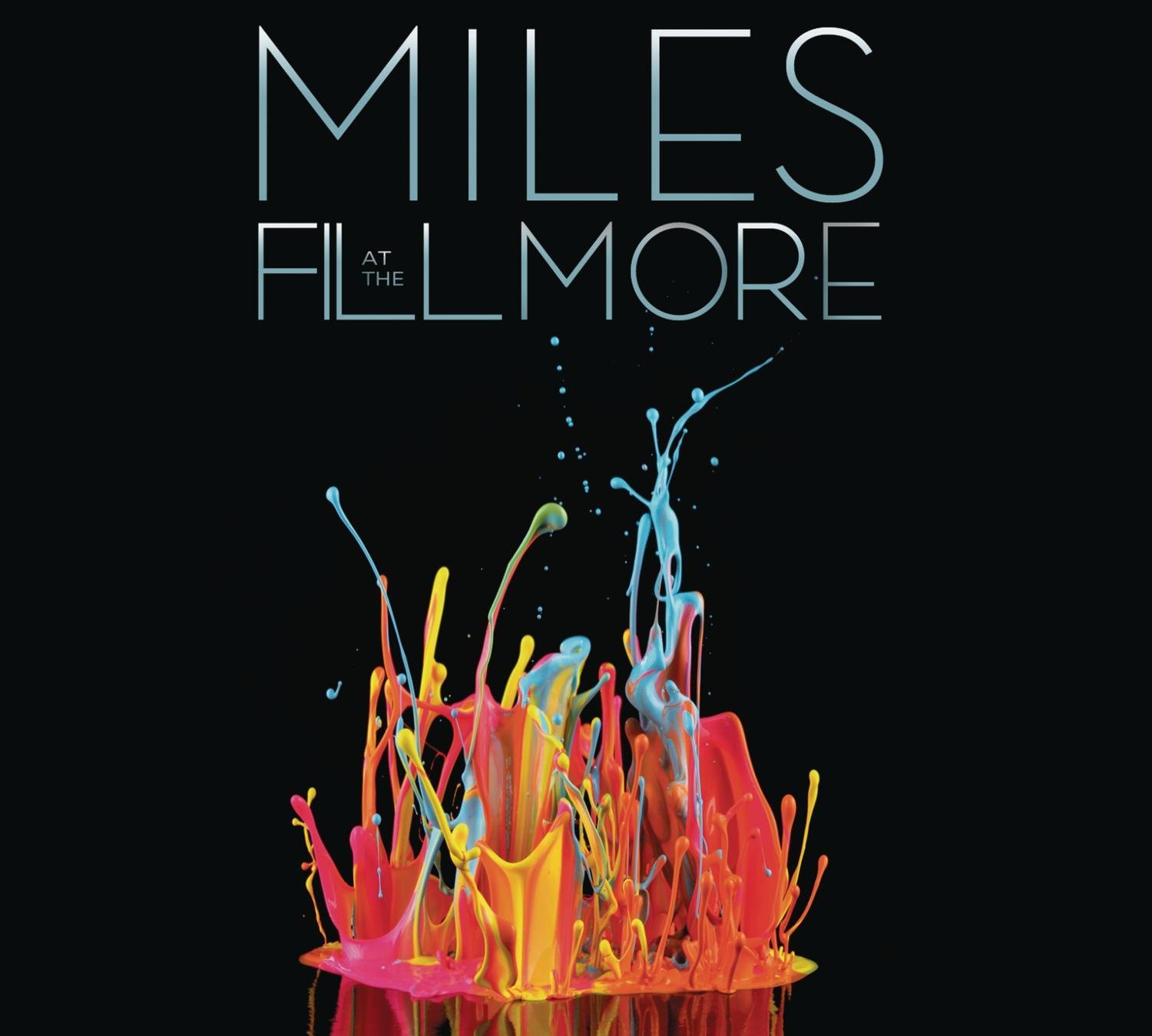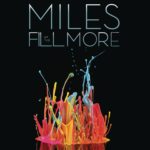
Columbia/Legacy
If you’ve waded into Miles Davis’ recorded legacy at all, then you undoubtedly know the story behind the music on this album … but much of the music itself will be brand-new to your ears. Miles Davis At The Fillmore was originally released in December of 1970, offering up two LPs’ worth of samples from Davis’ four-night stand at Bill Graham’s Fillmore East in June of that year. Although each side of the original two-record collection was dedicated to a night from the run (“Wednesday Miles,” “Thursday Miles,” etc.), vinyl constraints dictated that the respective sets’ music be edited down to 20-something minutes.
The new four disc Miles At The Fillmore – the third installment in Columbia/Legacy’s Miles Davis “bootleg” series – presents all four sets from Davis and his band in their entirety … and if that wasn’t enough, there’s an additional half-an-hour-plus of previously-unreleased music from The Fillmore West on 4/11/70.
This was the post- Bitches Brew lineup of Davis’ band, featuring a rhythm section of Dave Holland on bass, Jack DeJohnette on drums, and Airto Moreira on percussion (along with occasional flurries of flute and wild, free-form vocals). Saxophonist Steve Grossman worked the front line with Davis, flanked by Chick Corea on electric piano and Keith Jarrett on organ. (Corea is the sole keyboardist for the three Fillmore West tracks.)
Their groundbreaking forays into fusion were oftentimes wild and wooly. The historic Fillmore performances captured here feel less like the early Apollo flights and more like Slim Pickens’ wild-ass rodeo ride on the back of the bomb in Dr. Strangelove : a mission accomplished through sheer will, skill, and bravado rather than an arsenal of cutting-edge technology. (Focus on any one player – say, Jarrett’s periods of wah pedal-voiced madness – and you’ll realize how much they achieved with the most basic of tools.) While Davis’ fuse may have been lit by the funk and psychedelic rock he was listening to, the influences provided no maps – only a vibe to follow.
Each night’s set begins with a run through Joe Zawinul’s “Directions” – a set-opening staple during that period. Trumpet, sax, keys and bass spar ferociously over a head-down-and-no-looking-back driving funk beat, firing off flurries of punches that periodically touch down on the song’s main theme before spiraling back off into the wilderness. “Directions” morphs into Davis’ “The Mask” each night with Holland’s bass staging a takeover of the wheelhouse so subtle that it’s come and gone before you realize what’s happened.
The pace never slackens (they were the opening act, after all – Laura Nyro was the headliner during this run of shows), with the song-to-song segues providing their own moments of spontaneous drama. Sometimes the breaths between tunes are obvious enough for the Fillmore crowd to react; oftentimes the band ambushes them with a suddenly-recognizable snippet of a new main theme offered up in the midst of a fierce tumble of jammed-out groove. “Bitches Brew” emerges out of “It’s About That Time” on the first two nights of the run; the band swings into “I Fall In Love Too Easily” and “Sanctuary” on the third and fourth nights before Davis blows a cool path into “Brew”. The vaporous vibe of “Willie Nelson” makes an appearance on 6/20; “The Theme” is the final brushstroke of each Fillmore East night – including the “Spanish Key” encore on 6/18. The bonus Fillmore West material includes “Paraphernalia”, “Miles Runs The Voodoo Down” and the classic “Footprints”, all from from 4/11/70.
For sure, this was Miles Davis’ band – but these Fillmore sets attest to his magic as a bandleader as well as a soloist. His spotlit runs are brilliant, but so are the challenges and encouragement he doles out to the other players – perhaps “catalyst” would be a better title than “bandleader,” actually. Davis’ experiments with gear (including his own use of the wah pedal to manipulate his sound) were yet to come; here we basically have traditional tools – manipulation of embouchure, breath, and phrasing – applied to anything-but-traditional music.
While Corea and Jarrett are both powerful keyboardists, they never get cluttered up, even in the most chaotic of free-fall moments. (The album’s stereo mix allows for full focus on Corea in the left channel and Jarrett in the right.) Grossman blows wild and unfettered; Holland’s role constantly shifts from voice of rhythmic reason to lead miner in a jam excavation; Moreira’s contributions range from psychedelicized flute and percussion accents to let-fly vocal passages that often fly wingtip-to-wingtip with Davis’ horn. And Jack DeJohnette is Jack DeJohnette: equal parts scary-powerful and masterfully tasteful.
If you heard this music without knowing its origins, you’d find it intriguing – to know it’s been packed in a 44-year-old time capsule is truly amazing.
*****
Brian Robbins has a time capsule buried over at www.brian-robbins.com



No Comments comments associated with this post